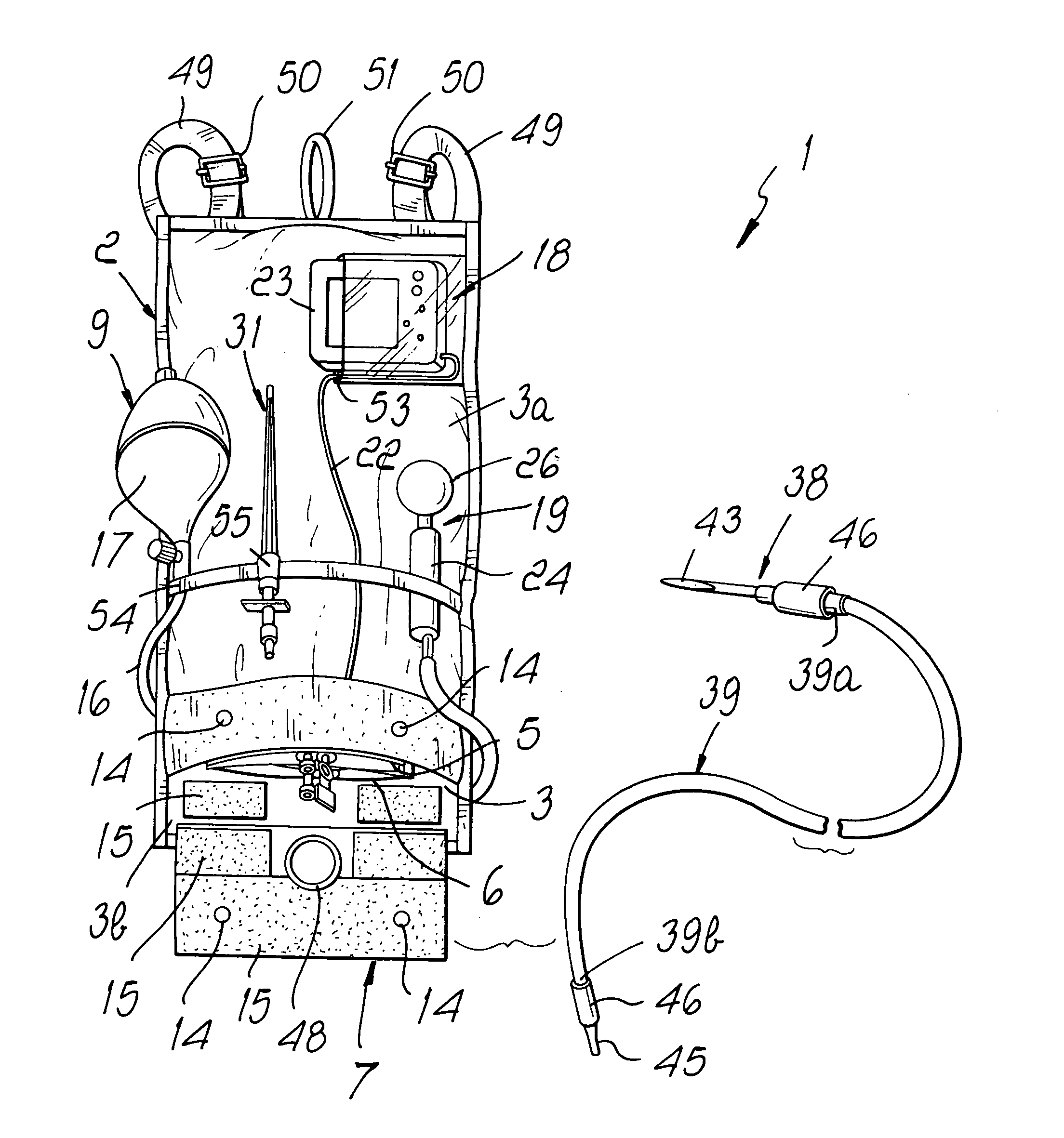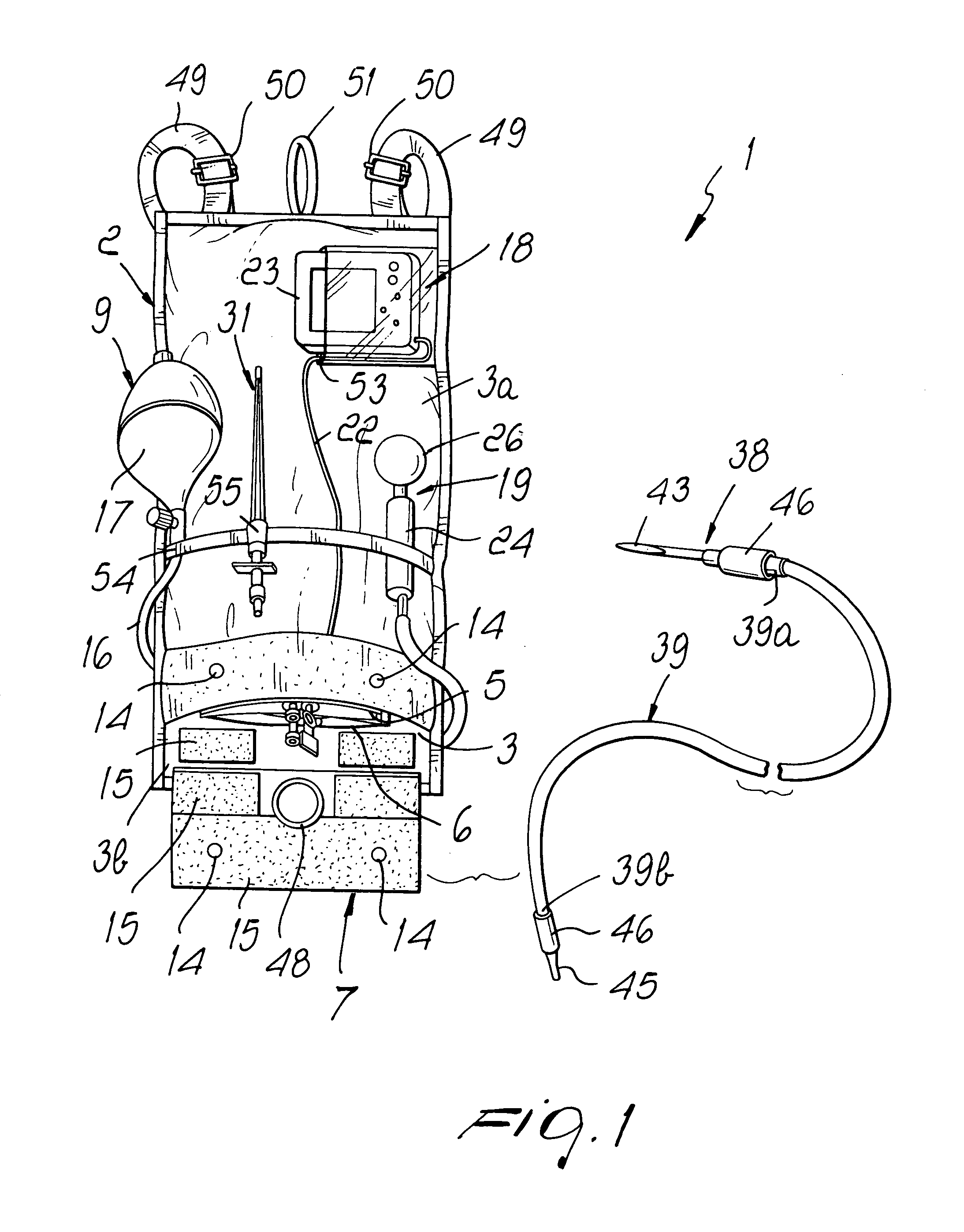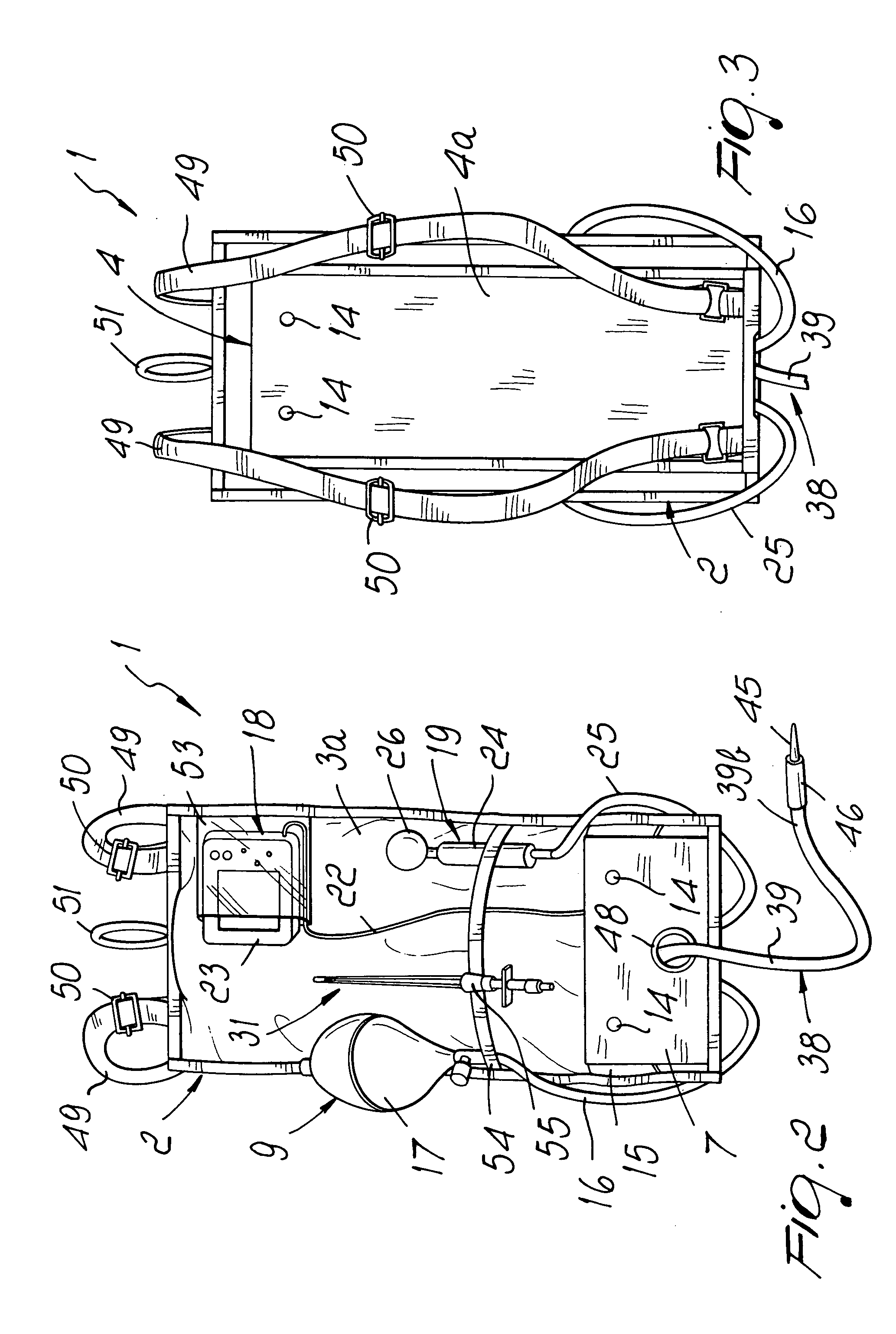Kit for injecting thermally-conditioned fluids, particularly for first-aid actions
a technology of thermally conditioned fluids and kits, which is applied in the direction of diagnostics, medical devices, containers, etc., can solve the problems of increasing the hypothermia of patients, insufficient level difference between containers and patients, and insufficient free known heating devices
- Summary
- Abstract
- Description
- Claims
- Application Information
AI Technical Summary
Benefits of technology
Problems solved by technology
Method used
Image
Examples
Embodiment Construction
[0051] With reference to the figures, the reference numeral 1 generally designates a kit for injecting thermally-conditioned fluids, particularly for first-aid actions.
[0052] The kit 1 comprises a bag 2, provided with a first pocket 3 and a second pocket 4, which substantially mutually overlap.
[0053] The first pocket 3 is suitable to contain a pouch 5 of fluid to be injected and optionally also a thermal reactor 6, which is also shaped like a pouch; said first pocket is also provided with a closure flap 7, which is suitable to contain leaks of the fluid contained in the pouch 5 and / or of the reagents of the thermal reactor 6.
[0054] The second pocket 4 is suitable to contain an air-filled chamber 8, which is associated with air pumping means 9.
[0055] The first pocket 3 and the flap 7 are made of waterproof and thermally-insulating material, constituted by the overlap of a waterproof layer 10 and of one or more thermally-insulating layers 11 made of Nylon (registered trademark), n...
PUM
| Property | Measurement | Unit |
|---|---|---|
| temperature | aaaaa | aaaaa |
| thermally-insulating | aaaaa | aaaaa |
| temperature | aaaaa | aaaaa |
Abstract
Description
Claims
Application Information
 Login to View More
Login to View More - R&D
- Intellectual Property
- Life Sciences
- Materials
- Tech Scout
- Unparalleled Data Quality
- Higher Quality Content
- 60% Fewer Hallucinations
Browse by: Latest US Patents, China's latest patents, Technical Efficacy Thesaurus, Application Domain, Technology Topic, Popular Technical Reports.
© 2025 PatSnap. All rights reserved.Legal|Privacy policy|Modern Slavery Act Transparency Statement|Sitemap|About US| Contact US: help@patsnap.com



